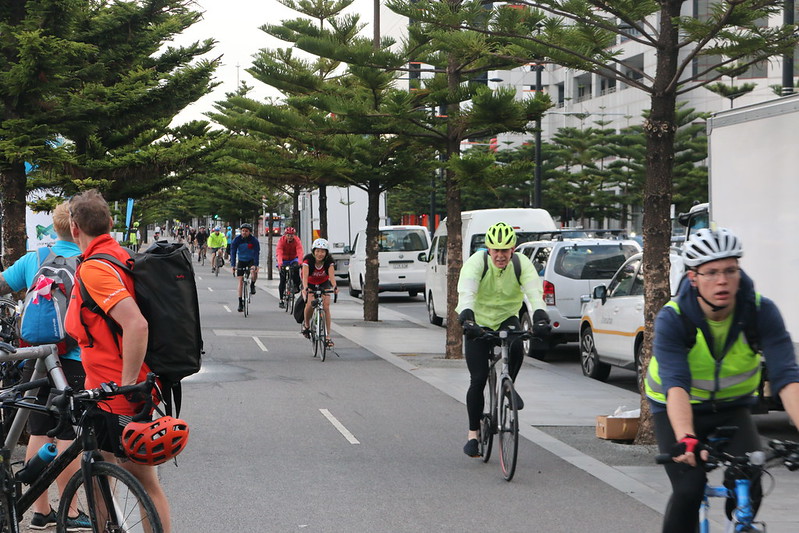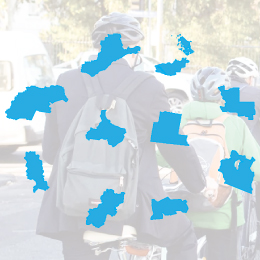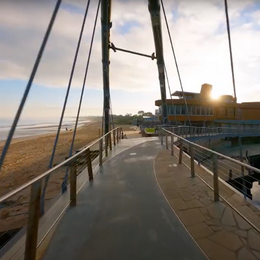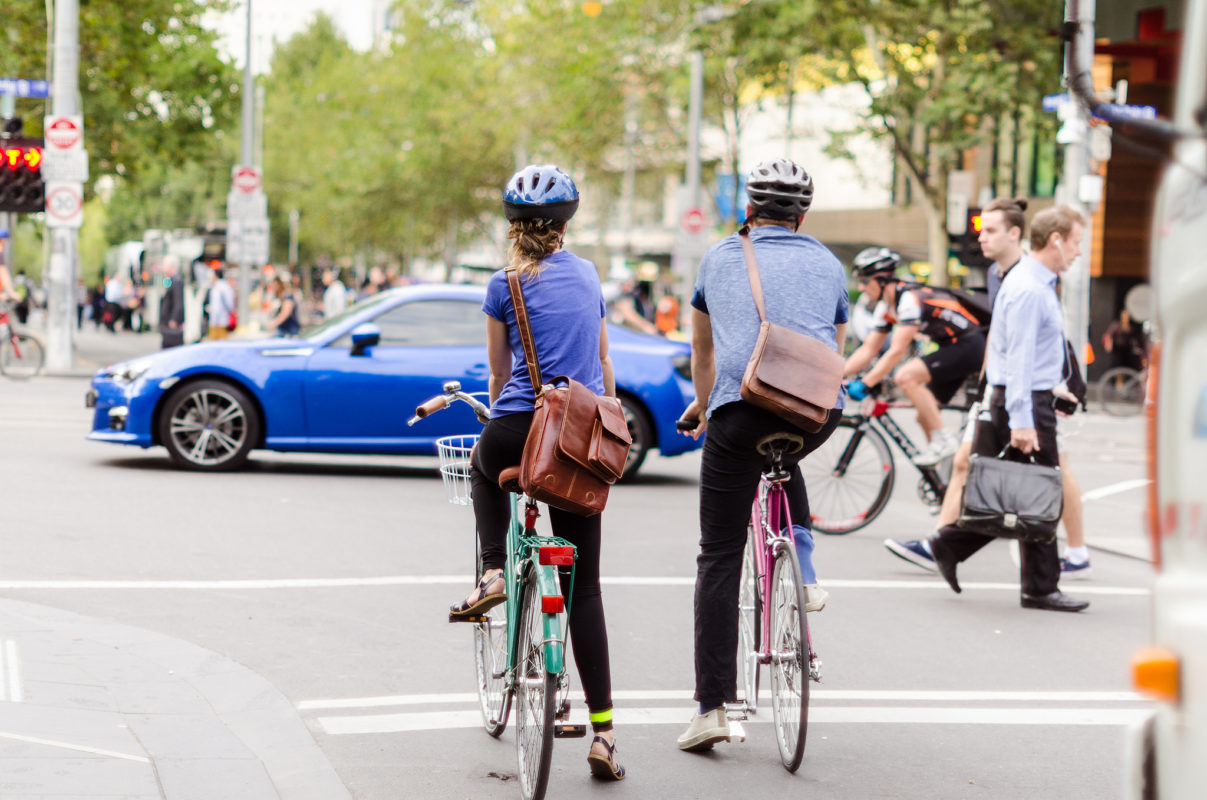Why #backthebike?
Over 10.3 million Australians rode a bike last year. Recently, however, bike enthusiasm has soared to new heights, with up to 270 per cent growth on shared paths in our capital cities. The next step for Australia is turning these recreational riders to regular riders who use their bike for commuting and accessing services. But to do this, we have three hurdles to jump…
Reframe bikes
We must stop thinking of a bike as simply another transport option. A bike is the only vehicle that can simultaneously increase physical and mental wellbeing, reduce carbon emissions and air pollution, decongest roads, ‘calm’ traffic, increase ‘liveability’, and reduce the cost of living for Australians.
Address community concerns
A stigma remains regarding bike use, which in many cases is due to rider’s fears of interacting with motor traffic.
We need to show that national efforts are being made to protect riders through a combination of legislation and infrastructure.
Make stronger investments
Bike facilities should not simply be add-ons to existing road projects, we need concentrated investment. To boost active travel, our spend should start at a minimum $20 per head of the population. For the cost of a single Uber trip, we can provide facilities for bike riders to make as many trips as they choose.

To back the bike, we are asking election candidates to make five key commitments…

Why?
To better connect our cities with healthy and sustainable transport options, we need a clear monetary commitment from the Federal Government. A 5 per cent budget allocation for active travel is not unreasonable. The United Nations recommends a 20 per cent budget allocation to fund walking and bike riding projects1. It is time for Australia to match international efforts.

Why?
It is becoming increasingly important to recognise that people who ride bikes are legitimate road users. ‘Positive provisioning’ is the commonly used term for framing active travel modes as mandatory components in current and future road projects, as opposed to separate or subsidiary projects.
The inclusion of active travel options in future transport investments must be a condition, not a consideration.

Why?
Behaviour change programs are integral to a well-rounded national bike strategy. They motivate participants by increasing their skills, easing their concerns, and highlighting the advantages of participating.
By providing bike education at a young age, we can foster a generation of Australians that are familiarised with the diverse benefits of active travel, and are motivated to enjoy an active travel lifestyle as they approach adulthood.

Why?
If we are serious about getting people riding, let’s put down an incentive. Many state governments are already announcing subsidies, stamp duty waivers, zero-interest loans, and other financial incentives for the purchase of electric vehicles. While this is a positive step towards more sustainable transport options, it does not solve the road congestion issues affecting our cities. There is where a co-existing bike subsidy scheme is important.
An Australian bike subsidy scheme can be easily developed from successful incentive program models in Sweden, Germany, Austria, and the UK, which have demonstrated increased rates of active travel, reduced rates of transport-related emissions, and increased gender equity.
A 30 per cent rebate policy also aligns with the ‘Build Back Better‘ proposal that is currently earmarked for the US.

Why?
Each year, 36 Australians on average die whilst riding a bike, a figure that has not changed in 20 years2. Approximately 23 per cent of the fatalities in an average year involve a heavy vehicle. The message is clear: we are yet to achieve a best practice for bike safety.
This is where advancing our vehicle safety standards can play a big role. The European Union’s General Safety Regulation (GSR) includes up-to-date legislation on safety technologies for new cars3. We are calling on election candidates to commit to matching these EU regulations.
And if you haven’t seen it yet, make sure you check out our Federal Budget submission 2022-23.
Budget submissionCandidate responses:
As we receive candidate responses to Bicycle Network’s Federal Election policy paper, we’ll make them publicly available here.
Liberal / National
Now’s the time to send your local candidates an email or letter asking them to do more for people who ride. Don’t forget to cc’ campaigns@bicyclenetwork.com.au.
Here’s a handy guide that makes contacting your local candidates easy.
Write to candidatesWhat commitments have been made so far?
In the lead up to the election, we’ll keep you posted on commitments and funding announcements made by major parties that are relevant or directly impact people who ride. This section will be changing as the election progresses and we secure more information.
If we’ve missed a commitment, please let us know via email: campaigns@bicyclenetwork.com.au.
Liberal
$5 million for the Peninsula Trail extension (VIC)
$1.7 million for the Point Walter Mountain Bike Facility (WA)
$4 million for Road Safety Awareness and Enablers Fund
$1 million for Bindoon mountain bike park (WA)
$11.8 million for Old Gympie Road upgrade with bike lanes (QLD)
$13.5 million for the Murray River Adventure Trail with bike and walking paths (VIC)
Labor
$8 million to upgrade Peel trail network (WA)
$2 million to deliver the Frankston Arts Trail (VIC)
$1.5 million for the Hartman Drive cycling path (WA)
$7.5 million for Hill Road upgrade (WA)
$4.9 million for Yarra Valley Trail Stage 2A extension (VIC)
$1 million for upgrades on the Monaro rail trail (NSW)
$5 million to build improved cycle paths through Canberra Inner North (ACT)
Greens
$500 million per year to make riding and walking safe and accessible
$250 million to build to Melbourne Bike Network (VIC)
$18 million to build active transport network in Hobart (TAS)
Other
$65 million for the Box Hill to Hawthorn Trail (Monique Ryan – IND)
5 per cent of federal transport budget for active transport projects (Australian Democrats)
Latest news

Funding announcements for bikes in the election: update
With election campaigning now well underway, funding announcements for bikes by the major political parties have been slowly trickling in.

Should Australia have an active transport budget?
At present, the Australian Government only funds active travel as part of larger infrastructure projects. We are recommending more reasonable funding be provided.

Ten marginal electorates riders need to watch this election
We count down the top marginal seats in this election, and the key bike projects that you can support.

Writing to candidates this federal election
Contacting your local candidates this federal election will help strengthen the voice for people who ride bikes in Australia.

Feds promise $5 million for Peninsula Trail
If re-elected at the forthcoming election the Coalition Government has promised to provide $5M towards the vital Moorooduc-Mornington missing link on the Peninsula Trail.

ALP promise funding for Frankston Arts Trail
If elected, the Australian Labor Party has promised to provide $2 million to deliver the Frankston Arts Trail, a proposed arts and cultural bike trail.
Make contact
Contact your local candidates and ask what they’re doing for bikes. We’ll share their responses online – just make sure you cc us at campaigns@bicyclenetwork.com.au
Need help? Check out our handy guide.
Write to candidatesBecome a member
Become a member today and together we can make it easier for more people to ride.
Join nowShare on social
Share our election campaign on social.
Become our friend
Find out more about Bicycle Network and support us in making it easier for people to ride bikes.
Authorised by N. Hunter, Level 4, 246 Bourke Street, Melbourne VIC 3000





